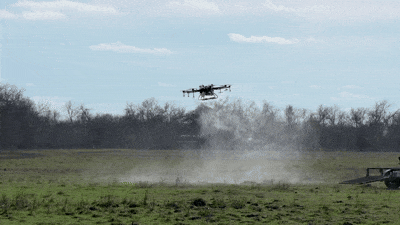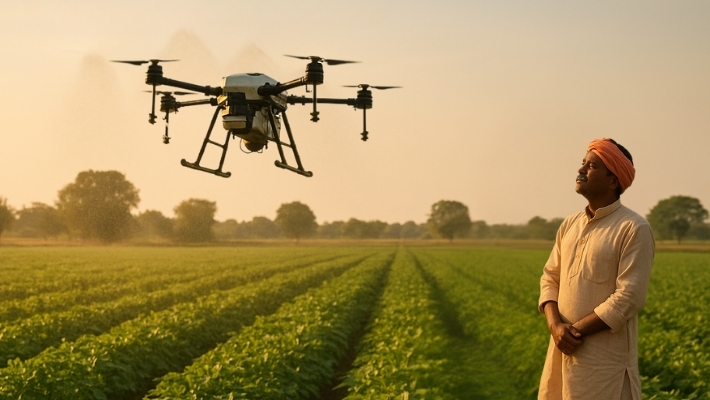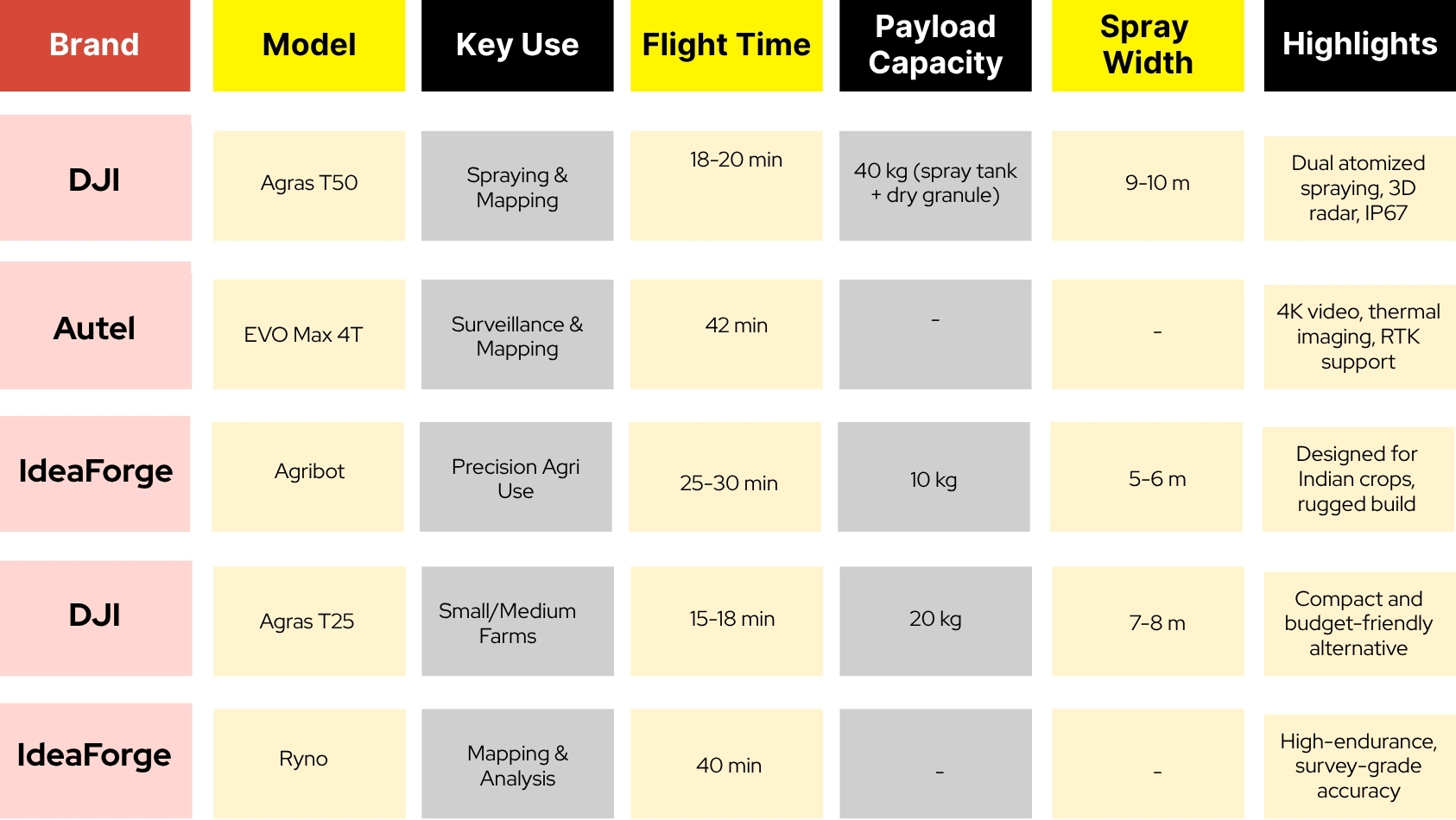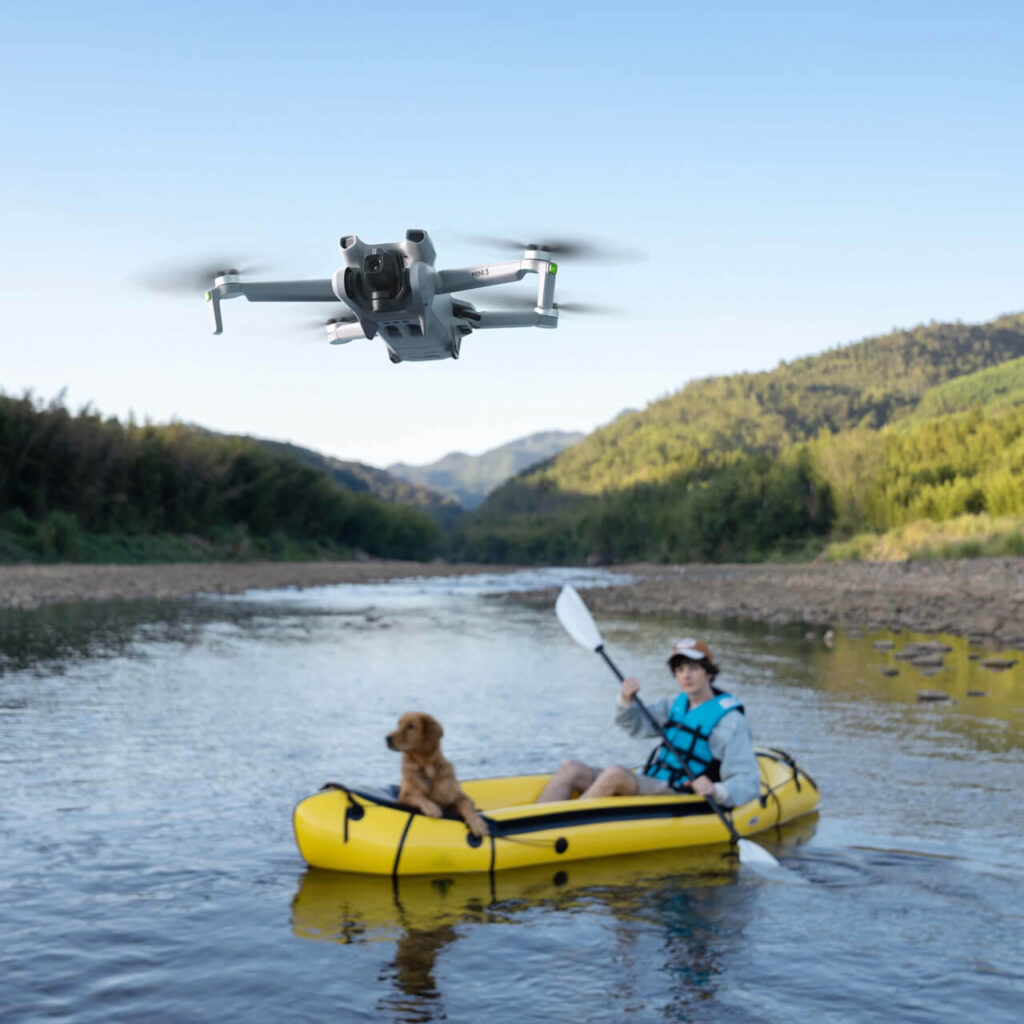Indian agriculture is at a turning point. With unpredictable weather, labor shortages, and the rising cost of inputs, farmers are looking for smarter ways to manage their fields. This is where agriculture drones come in not just as gadgets, but as powerful tools that are changing how farms are monitored, managed, and maintained.
Whether you’re running a large agri-enterprise or managing a mid-size family farm, drones offer precision, efficiency, and real-time data that traditional farming methods simply can’t match. From spraying fertilizers to mapping your crops, agriculture drones are helping Indian farmers work faster, use fewer resources, and get better yields.
In this guide, we’ll explore:
- How agriculture drones are used on Indian farms
- Key benefits for different types of farmers
- The top drone models in 2025 from trusted brands like DJI, Autel, and IdeaForge
- A simple buying guide and tips to get started
- Where to buy authentic drones including Jetayu Gadgets, your trusted multi-brand drone seller
Let’s dive in and see how the future of Indian farming is taking off quite literally.
How Drones Are Used in Agriculture Today

Agriculture drones are no longer a luxury they’ve become essential tools for modern farming. In India, their adoption is rising quickly due to government support, precision farming initiatives, and a growing awareness of their benefits.
Here are the most common ways drones are being used in Indian agriculture:
1. Aerial Crop Monitoring
- Drones equipped with multispectral or RGB cameras fly over large fields to scan crop health.
- They help detect stress, diseases, or water shortages before they become visible to the naked eye.
- This allows farmers to take early action and protect their yields.
2. Precision Spraying
- Spraying drones can apply fertilizers, pesticides, and micronutrients with pinpoint accuracy.
- They reduce chemical usage by up to 30%, save water, and cover more area in less time than manual methods.
- Ideal for uneven or hard-to-reach terrains.
3. Field Mapping and Surveying
- Drones create detailed 2D maps and 3D models of the land, showing elevation, slope, and drainage patterns.
- These maps help with better planning for irrigation, soil testing, and crop rotation.
4. Crop Counting and Yield Estimation
- Using AI and data analytics, drones can estimate plant counts and predict yields.
- This helps with planning logistics, storage, and sales in advance.
5. Livestock Monitoring and Perimeter Checks
- On large farms, drones are also used to keep an eye on livestock and secure farm boundaries.
Benefits of Agriculture Drones for Indian Farmers

Whether you’re cultivating wheat in Punjab, managing rice paddies in Tamil Nadu, or growing sugarcane in Uttar Pradesh, agriculture drones bring a clear set of benefits to the table. They’re not just futuristic add-ons they’re practical, cost-saving tools that are reshaping Indian agriculture.
1. Saves Time and Labor
Manual spraying and field inspections can take days. A drone can do the same job in hours with better accuracy.
- One spraying drone can cover up to 30 acres a day
- Great for areas where finding skilled labor is a growing challenge
Want to know more? Read: [Can Drones Solve India’s Labour Crisis in Agriculture?]
2. Reduces Wastage of Chemicals and Water
Precision spraying ensures you use only as much pesticide or fertilizer as needed.
- Up to 30% less pesticide used
- Up to 90% water savings compared to traditional spraying methods
3. Increases Crop Yields
By identifying issues early and taking timely action, farmers can protect their crops and improve overall yield.
- Early disease detection
- Efficient spraying and fertilization
- Real-time insights help plan better
4. Improves Worker Safety
No need to manually spray in harmful environments or walk into flooded or pest-infested fields.
5. Government Support and Subsidies
Under schemes like the Sub-Mission on Agricultural Mechanization (SMAM), the Indian government is offering financial assistance to promote drone adoption among farmers and FPOs (Farmer Producer Organizations).
6. Supports Large-Scale Farm Management
Drones are perfect for:
- Monitoring large tracts of land
- Managing contract farming
- Keeping digital farm records and maps
7. Data-Driven Farming
With the integration of AI and GPS, agriculture drones can provide detailed crop reports, soil analysis, and help in yield forecasting.
Heads up: Before buying a drone, it’s important to understand what legal permissions you need in India — especially for commercial use like agriculture.
Read this guide: [Can I Fly My Drone Freely or Do I Need a License? Understand the Rules]
Top Agriculture Drone Models in 2025 (DJI, Autel, IdeaForge)
Not all agriculture drones are built the same. Some are designed for crop spraying, others for field surveillance or multispectral imaging. Here’s a look at the best-performing agriculture drones available in India in 2025, sold through trusted sellers like Jetayu Gadgets.
Comparison Table: Top Agriculture Drones (2025)

Available at Jetayu Gadgets
Jetayu offers these models with official warranty, training support, and genuine accessories.
Key Highlights by Brand
DJI Agriculture Drones
- Agras T50: Ideal for large farms. Dual spraying and spreading, with millimeter-level radar.
- Agras T25: Better for smallholders or FPOs looking for affordability with precision.
Also read: [What Is the DJI Fly More Combo? Is It Worth It in 2025?] — especially if you’re considering accessories for your drone investment.
Autel Agriculture Drones
- EVO Max 4T is more focused on crop inspection, security, and smart surveillance.
- Great for agri-tech professionals and precision crop analytics.
IdeaForge Agriculture Drones
- Agribot and Ryno are designed with rugged Indian conditions in mind.
- Favored by institutions, government bodies, and FPOs due to Made-in-India reliability.
How to Choose the Right Agriculture Drone: A Simple Buying Guide
Buying an agriculture drone is a serious investment. Whether you’re a farmer, FPO member, agri-startup, or part of a cooperative, choosing the right drone depends on a few important factors.
Here’s a simple guide to help you decide:
1. Define Your Primary Use
- For Spraying (Fertilizers, Pesticides):
Look for drones with high payload capacity (20+ kg), durable spray tanks, and wide spray width.
Recommended: DJI Agras T50, T25 - For Mapping and Monitoring:
Choose drones with HD cameras, GPS/RTK support, and longer flight time.
Recommended: IdeaForge Ryno, Autel EVO Max 4T - For Mixed Use (Surveillance + Spraying):
Go for versatile models like IdeaForge Agribot or DJI T25.
2. Match Drone Size with Farm Size
| Farm Size | Suggested Drone Type |
|---|---|
| Less than 10 acres | DJI Agras T25, Agribot |
| 10–50 acres | DJI Agras T50, IdeaForge Agribot |
| 50+ acres | DJI Agras T50, custom fleet or rental solutions |
3. Consider Budget and ROI
- Budget Range: ₹3.5–12 lakh for high-performance agri drones
- Compare not just price, but:
- Warranty & service support
- Ease of getting spare parts
- Battery life and flight time
Worried about crashing or repairs? Read: [Worried About Crashing Your First Drone? Here’s Why DJI’s Safety Features Have Your Back]
4. Check for DGCA Certification
In India, agri drones used for spraying need to be DGCA certified and operated by licensed pilots. Make sure:
- The drone model is approved
- The pilot is trained or certified
Learn more here: [Can I Fly My Drone Freely or Do I Need a License?]
5. Buy from an Authorized Seller
Avoid refurbished or grey-market drones that may not qualify for warranty or DGCA registration.
- Jetayu Gadgets is an authorized seller of DJI, Autel, and IdeaForge
- Offers training, after-sales service, and paperwork support
Frequently Asked Questions About Agriculture Drones
1. Do I need a license to fly an agriculture drone in India?
Yes, if you’re using the drone for commercial purposes like spraying or surveying, you must:
- Fly a DGCA-certified drone
- Hold a Remote Pilot Certificate
- Register your drone on the Digital Sky platform
Read more: [Can I Fly My Drone Freely or Do I Need a License?]
2. Are there government subsidies for buying agri drones?
Yes. Under schemes like SMAM (Sub-Mission on Agricultural Mechanization):
- Individual farmers, FPOs, and custom hiring centers can apply for up to 40–100% subsidy
- You’ll need to buy from an authorized vendor and submit required documentation
3. What is the average price of an agriculture drone in India?
- Entry-level drones (like DJI Agras T25): Around ₹3.5–5 lakh
- Mid-range to high-end drones (like DJI T50, IdeaForge Agribot): ₹6–12 lakh+
- Price may vary based on payload, brand, accessories, and services included
4. How long does the battery of a drone last during farming operations?
Most agri drones can fly 15 to 30 minutes per battery cycle depending on:
- Payload weight
- Flight pattern
- Weather conditions
Hot tip: Carrying multiple batteries and a field charger is a smart move for large farms.
5. Where can I buy original agriculture drones in India?
You can buy agriculture drones from Jetayu Gadgets, a trusted multi-brand drone reseller.
They offer:
- Official DJI, Autel, and IdeaForge models
- Warranty and DGCA-certified options
- Full support for paperwork, training, and repairs
6. Can drones really help increase farm productivity?
Yes — studies and real-world use show:
- Better crop health monitoring
- Efficient spraying, saving time, water, and chemicals
- Higher yield and lower input cost over the long run



